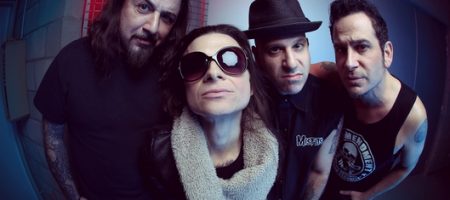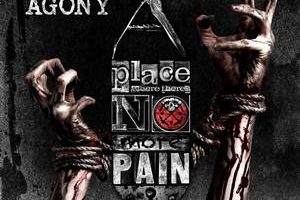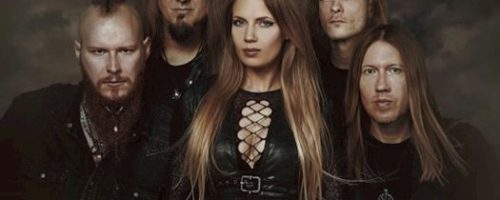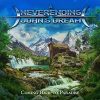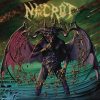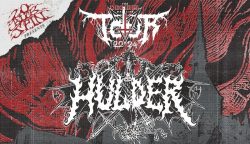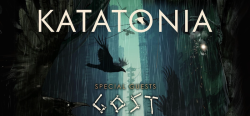Life of Agony – The Scars Remain
Tuesday, 15th October 2019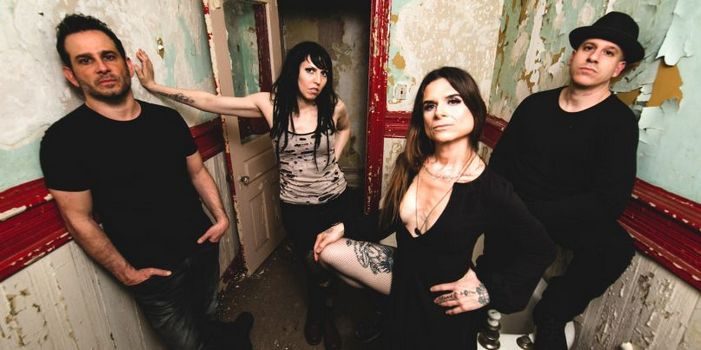
With each band that comes back from a long hiatus in new material and releases ‘the comeback’ album, the question always remains of where to go next. In the case of Life of Agony, some creativity and inspiration directed them back in the direction of their seminal release River Runs Red. The new album, The Sound of Scars continues the story from the teenager of said album’s concept, and brings it 26 years into the future. Both lyrically as well as the band’s musical direction. A merger of where the band has been, and where they’d like to go in the future. Because of this, it’s an emotional powerhouse as well as a strong stepping point for the band following their successful comeback in 2017 with A Place Where There’s No Pain. We spoke with bassist Alan Robert about the connection between RRR and Scars, new drummer Veronica Bellino, the band’s relationship with fans, and his adult coloring series The Beauty of Horror.
Dead Rhetoric: What made you decide to continue the story of River Runs Red with The Sound of Scars?
Alan Robert: Veronica [Bellino] joined the band on drums last year, and when we started to listen to the old records again to relearn some of the material that we haven’t played in decades, we listened to it with fresh ears. We realized that we kind of abandoned certain songwriting elements over the years as the band evolved, not consciously really, but things like the big background vocals and making anthems out of songs…even some of the breakdown choices.
The overall songwriting evolved and we never looked back. This was an opportunity to look at what we did with fresh eyes and ears, and it made an impact on us. We thought, “Why don’t we do that anymore? We have so much fun singing back-ups and playing those songs every night live, why don’t we incorporate that into new material?” That was what we were thinking about.
As far as tying in the narrative of the River Runs Red story, that came a bit later. That was 4 or 5 songs into the writing of the record. A lot of our fans have said that they have been saved by our music, and we have a history of bonding with people all over the world with our music, and it has gotten them through dark times. We are all survivors in a lot of ways. We started thinking about if the teenage boy from River Runs Red had a band like us that he connected with that got him through a rough patch. Maybe he would still be here today. That was the thinking – it was very organic and retrospective.
It excited us a great deal to think of the possibilities of continuing that story now, 26 years later. Even the fact that something out of our control – being given this release date of October 11, which was almost to the day, 26 years ago when River Runs Red came out. It came out on October 12, 1993. It was kind of cosmic in that we were given that release date for a reason. It gave us a sign that we were on the right path in a way.
Dead Rhetoric: Were you nervous at all, knowing that in terms of the way people look at the band, that River Runs Red is quite a big deal still?
Robert: We never really seconded guessed things like that. We always do things to please ourselves first. It may sound a little selfish, but you can’t really base creativity on what other people might think. You can’t look for validation – it feels good when people say that the record is great and it connects to them in a certain way, and that’s great. But to write a song or record with that intention, we have never done that. We were always out to make music that we wanted to hear, in every stage of our career.
Dead Rhetoric: How would you describe The Sound of Scars compared to your other material, even though each release does seem to have it’s own feeling?
Robert: I think every recording captures a certain time and space. This was where our heads were at this past year. Looking back at our body of work and also looking towards the future. I think it’s a good mesh of those two mindsets. It has a lot of old school elements, but it also sounds modern at the same time. I think we have all grown a lot, but at the same time, we have recognized certain chemistry and formulas for us that make us move. Ultimately, even in the beginning, we had two things that every song had to have. It had to make you move physically, and it had to move you emotionally. I think we captured that with every song on this record.
Dead Rhetoric: You mentioned Veronica earlier, what do you feel she brought into the band?
Robert: She kind of brought a new life to us. She gave us that fire and passion back as a unit, as a group of people. We felt inspired again. She was so happy to be a part of it. That translated into our energy as well. As soon as she joined, we were doing things differently. We were playing longer sets, we were changing things up night after night and playing songs we hadn’t done in decades. We were taking more risks – we were going for it as soon as she joined, and we haven’t looked back.
Dead Rhetoric: Do you feel that that youthful hunger is back in the band?
Robert: Oh yeah, there’s a fire now. I think you can hear it through the record. And everything that we did along the way. The tours that we did – partnering up with our brother Billy from Biohazard with his new projects, playing shows with Sick of it All, who we haven’t played with in like 30 years. We just wanted to do stuff like that. Things that were fun, and made us happy. I think that translated, in some many ways. That was the foundation that we built this record on.
Dead Rhetoric: Could you go into the theme of ‘scars’ on the album, and with you working on the design of the album itself, what that lead to in terms of its visual presentation?
Robert: It’s kind of cool – the cd packaging is pretty similar to the “Scars” video, where there’s tattoos from fans of the band’s logo all through out. It’s very tied to physical and emotional scars, and living with those scars. People can get suffocated by those feelings, or they can embrace those feelings and move on, knowing that they survived those things that still haunt them. That’s really the theme of the record – living with scars, and your choice of how you handle it. I think that is also the biggest focus of the character in the narrative, and how he is dealing with it.
Dead Rhetoric: How important is that connection that the band has with the fanbase?
Robert: I think it’s completely intertwined. When we wrote River Runs Red at 17-18 year old, we wrote those songs, or at least I did lyrically, in terms of trying to find an escape. Ultimately, those songs impacted a generation of music fans that needed to connect with music that made them feel less alone. Here we are all those years later, grown up, and all survivors. It’s pretty powerful. We have fans grow up with this band, and turn on their kids or younger brothers/sisters on to it. We also have a whole legion of fans too. We’ve got several generations at this point. We started this band in 1989, and we have been in the band longer than we haven’t, which is interesting.
Dead Rhetoric: You mentioned having music that makes you move, but also moves you emotionally. Could you talk more about that emotional heaviness that Life of Agony has always had?
Robert: We have always been big fans of Roger Waters and Pink Floyd. They were kind of the kings of pushing emotional triggers in music. There were certain moments on Pink Floyd records where they would take a long break before hitting you over the head – Roger Waters breaking out a giant wail and then going into a Gilmour lead that would just crush you emotionally. Those were the things we were trying to do. Mina [Caputo] was always fantastic at belting out those really strong vocals and emotional performances. It tied to the really heartfelt, honest lyrics. It was a really unique combo for this genre.
Dead Rhetoric: Switching gears a bit, at this point you have a bunch of The Beauty of Horror coloring books out there. Have you been surprised at how it has taken off?
Robert: Yeah, because it really started out as a joke. In 2016, the night before April Fool’s Day, my wife and daughter were coloring on one of those really beautiful nature coloring books, and I had come home from the studio and they wanted me to color with them. I couldn’t find anything to color – everything was too pretty I guess [laughs]. My wife asked me what I would want to color, and I said “Something disgusting.” She asked what came to mind and the most disgusting thing I could think of was CBGB’s bathroom [laughs]. So I drew it, and posted it on Facebook. It got downloaded like over 400 times that night, and people colored and posted it online. It was hilarious!
So it was April Fool’s Day, and I had been doing horror graphic novels with IDW Publishing. I pitched them the idea for a gory, adult coloring book, and I got the quickest yes you could imagine. But it was April Fool’s Day, and I thought they were joking [laughs]. Usually it takes a week to greenlight a project, and they got back to me within 10 minutes with a giant yes. But that’s how it started. It has really taken off. It’s available in all of the big chain stores like Walmart, Target, and Barnes & Noble, as well as Amazon. I am on my 6th or 7th book at this point.
Dead Rhetoric: I saw the stop-motion Christmas video [The Night Terror Before Christmas – see below] as well, that was pretty awesome.
Robert: The animator, Trent Shy, did an amazing job. That’s another thing that kind of blew my mind. There’s over 5.5 million views on that thing!
Dead Rhetoric: What kind of catharsis do you get from drawing, as well as music?
Robert: I always started with art – as a young kid I was always drawing monsters. I was at the lunch room table at school, and was a pretty quiet kid. I made a lot of friends from drawing weird shit all day. Kids would look over my shoulder and see what kind of wacky shit I was drawing. It was a nice way to make friends – I didn’t have to say a word, I would just draw monsters all day. For a quiet kid like me, it was a great way to connect with people. As I got more outgoing over the years, and music came into my life, that also seemed like a great way to connect with people as well as a great way to deal with my own depression – writing lyrics and putting them to music.
Dead Rhetoric: You stated that you have been in the band for more of your life than not at this point. How do you feel that Life of Agony has shaped you as a person?
Robert: I think it’s definitely part of my DNA at this point. Just having music as an outlet to kind of heal myself, by getting a lot of negative thoughts out through music is a sense of relief. When I finish writing lyrics to a song, I get it out of my system and I can move on. To hear those lyrics being screamed at me by someone halfway across the world, while tears stream down their face, because that song helped them get through a tough time, it’s really a full-circle experience for me.
Dead Rhetoric: Lastly, what’s next at this point besides the release of the album?
Robert: We have a new video coming out for a song for “Black Heart.” We will head to Europe and we are bringing out our brother Doyle from The Misfits, and we will play all throughout Europe and the UK. We have another leg of the tour in Canada, and end in New Jersey right before Christmas. We’ll have some big announcements for the new year as well.
Life of Agony official website
Alan Robert official website












